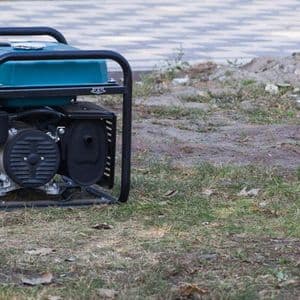Key Features to Consider When Choosing a Humidifier for Plants
Key Factors to Consider When Choosing a Humidifier for Plants
Operating Mechanisms
Humidifiers for plants primarily fall into two categories: ultrasonic and evaporative. Ultrasonic humidifiers use sound waves generated by ceramic plates to release a fine mist that increases humidity. This mist can settle directly on plant leaves before evaporating, making it ideal for moisture-loving plants. However, placing the humidifier too close to plants can cause condensation on leaves or oversaturate the soil, which can harm your plants. For more details on this process, visit the University of Vermont Extension guide on managing humidity for houseplants.
Evaporative humidifiers, on the other hand, use a fan to draw water through a filter, converting it into water vapor. While effective, these models are typically louder and may consume more energy, especially if they include a heating element for warm mist. For an in-depth comparison of humidifier types, check out Gardenista's Best Humidifiers for Houseplants.
Size, Capacity, and Mist Temperature
The humidifier’s size and tank capacity determine how well it can meet your plant's needs. For a few indoor plants, a compact unit is sufficient, but larger spaces with numerous plants, such as a sunroom, require a more robust model. Mist temperature also plays a crucial role: cool mist works for general humidity needs, while warm mist benefits tropical plants that thrive in a warm, moist environment. Learn about plant-specific humidity requirements at the American Horticultural Society.
Always monitor your home’s humidity levels, as excessive humidity can harm both your plants and your furniture. Optimal levels typically range from 40% to 60%. Devices with smart features, such as the Levoit OasisMist 450S Smart Humidifier, can help maintain these levels effectively. For additional product recommendations, explore Levoit Humidifiers: Plant Humidity Solutions.
Additional Considerations
When caring for plants with varying humidity needs, it’s important to understand which species require humidifiers. For example, tropical plants benefit from higher moisture, while succulents and cacti thrive in drier conditions.
By carefully selecting a humidifier that aligns with your plant's environment and humidity requirements, you can foster healthy growth and vibrant greenery.
FAQ
1. Why do plants need a humidifier?
Plants, especially tropical varieties, thrive in environments with higher humidity levels. A humidifier helps mimic their natural habitat by maintaining optimal moisture in the air, promoting healthy growth and preventing issues like dry leaf tips or wilting.
2. What is the ideal humidity level for plants?
Most houseplants prefer a humidity range of 40-60%. However, some tropical plants may require levels closer to 70-80%, while succulents and cacti thrive in drier conditions below 40%.
3. Should I choose an ultrasonic or evaporative humidifier for plants?
Both types are effective, but the choice depends on your needs:
Ultrasonic humidifiers release a fine mist and are quieter, making them suitable for targeted plant care.
Evaporative humidifiers use a fan and are ideal for increasing humidity in larger spaces but may be noisier.
4. Is warm or cool mist better for plants?
Cool mist is suitable for most plants, while warm mist is beneficial for tropical plants that prefer warm and humid conditions. Your home’s environment and the specific needs of your plants will help determine the right option.
5. Can I place the humidifier close to my plants?
It’s best to position the humidifier a few feet away from your plants. Placing it too close can cause condensation on leaves or over-saturation of the soil, potentially leading to mold or root rot.
6. What size humidifier do I need?
For a few plants in a small room, a compact humidifier is sufficient.
For larger plant collections in spaces like sunrooms, a larger model with a high water tank capacity is recommended.
7. How do I maintain a humidifier for plants?
Regular cleaning is essential to prevent bacteria and mineral buildup. Use distilled water to reduce mineral deposits, and clean the humidifier weekly with a vinegar solution or as per the manufacturer's instructions.
8. Can a humidifier damage furniture or walls?
Excess humidity can cause damage to furniture, walls, or fabrics. It’s crucial to monitor humidity levels and maintain them within the recommended range (40-60%).
9. Are smart humidifiers worth it for plant care?
Yes, smart humidifiers with features like live humidity monitoring and app control make it easier to maintain consistent humidity levels. Some models even allow you to customize settings based on plant needs.
10. What are the best humidifiers for plants?
Some top recommendations include:
- Honeywell Designer Cool Humidifier White – Best for advanced features and smart controls.
- LEVOIT OasisMist Humidifiers Customized Ultrasonic – Ideal for warm mist and tropical plant care.
- Dreo Humidifiers Supersized Ultrasonic Humidifier – Best for small spaces.
















































































